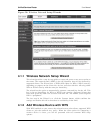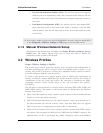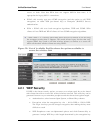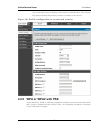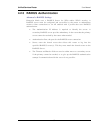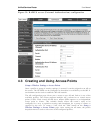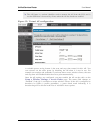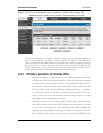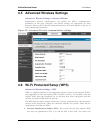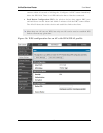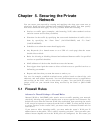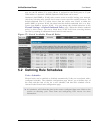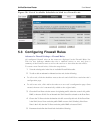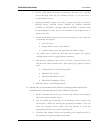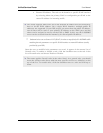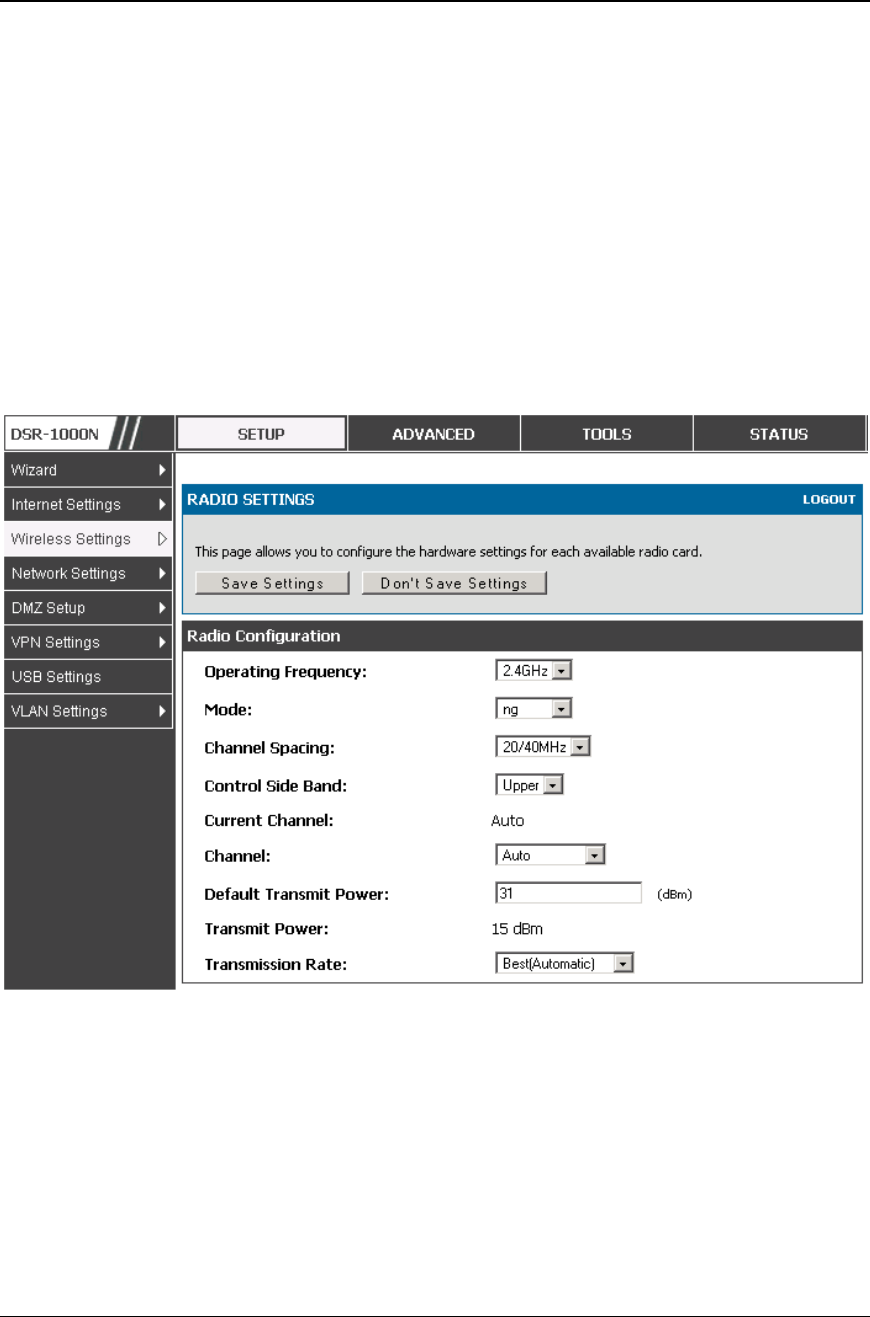
Unified Services Router User Manual
62
broadcast the SSID for the VAP with WEP since it is meant to be used for a
few legacy devices in this scenario.
4.4 Tuning Radio Specific Settings
Setup > Wireless Settings > Radio Settings
The Radio Settings page lets you configure the channels and power levels available
for the AP‘s enabled on the DSR. The router has a dual band 802.11n radio, meaning
either 2.4 GHz or 5 GHz frequency of operation can be selected (not concurrently
though). Based on the selected operating frequency, the mode selection will let you
define whether legacy connections or only 802.11n connections (or both) are accepted
on configured APs.
Figure 34: Radio card configuration options
The ratified 802.11n support on this radio requires selecting the appropriate broadcast
(NA or NG etc.) mode, and then defining the channel spacing and control side band
for 802.11n traffic. The default settings are appropriate for most networks. For
example, changing the channel spacing to 40 MHz can improve bandwidth at the
expense of supporting earlier 802.11n clients.
The available transmission channels are governed by regulatory constraints based on
the region setting of the router. The maximum transmission power is similarly
governed by regulatory limits; you have the option to decrease from the default
maximum to reduce the signal strength of traffic out of the radio.



